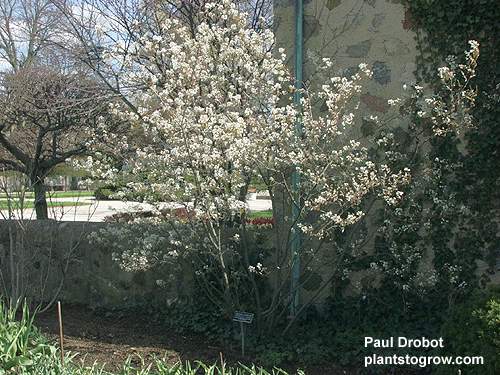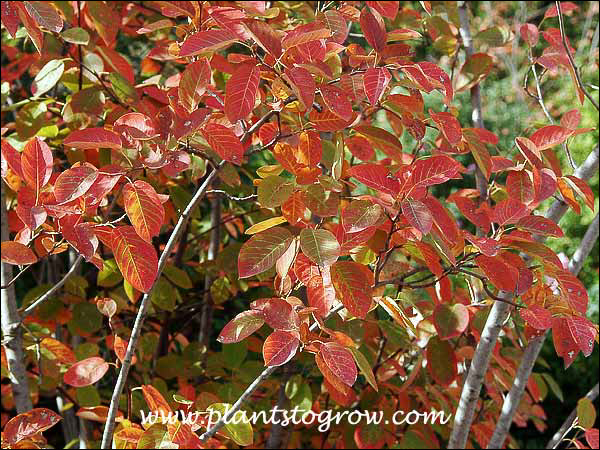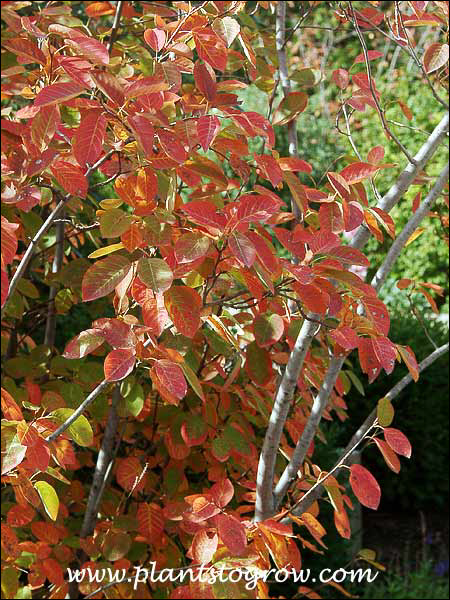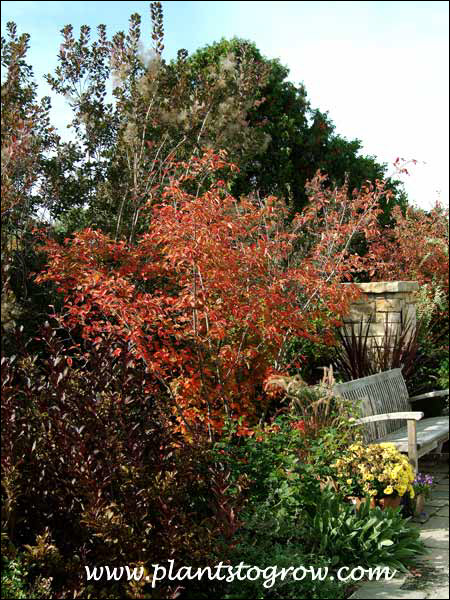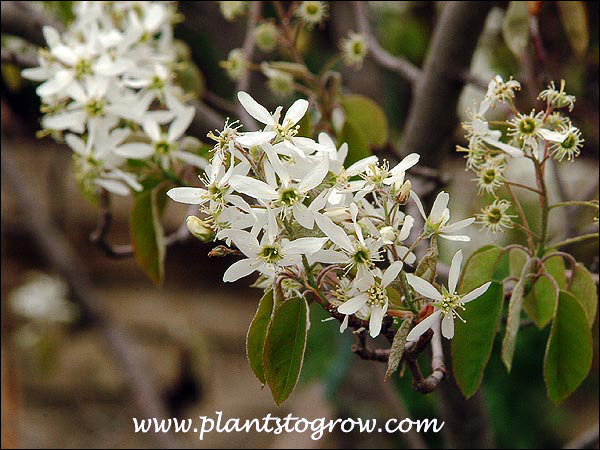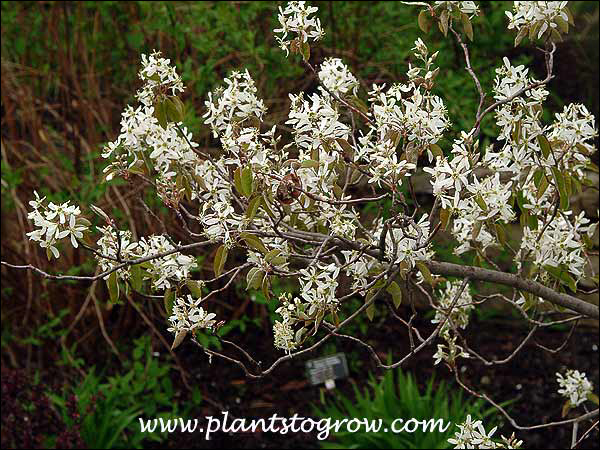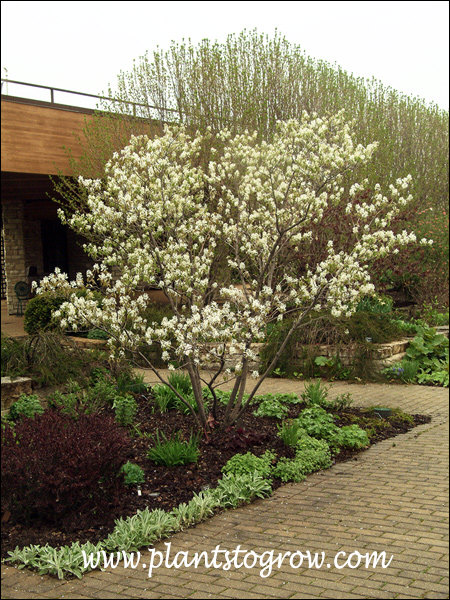| Description | This plant can be considered a small tree or a large shrub. Has white flowers in the early spring followed by edible fruit. Grows best in the semi-shade, moist sites. |
|---|---|
| Pronunciation | (am-e-LANG-key-er) |
| Plant Type | All Plants, Trees Deciduous |
| Hardiness Zone | 4 |
| Sunlight | best in mostly sunny to sites with some shade, will tolerate hot sunny areas |
| Moisture | average to moist, tolerates dry once established |
| Soil & Site | average, moist well drained soils |
| Flowers | white, borne in pendulous racemes in end of April before the leaves have appeared. |
| Fruit | edible fruit starts green, changes to red and than ripens to a purple color, botanically called a pome, birds love this fruit |
| Leaves | simple, opposite, emerge as a grayish bronze color changing to green, excellent fall color, yellows, reds and oranges |
| Stems | smooth gray bark |
| Roots | fibrous |
| Dimensions | reaches 25 feet tall by a spread of about 15 feet |
| Propagation | plant patent #6041, cuttings, tisue culture |
| Cultivar Origin | Selected by Tom Watson from a plant growing on his parents property in Milwaukee, Wisconsin, USA |
| Misc Facts | The species plant has a few nick names. June berry because the fruit ripens in June, Serviceberry because it bloomed during the spring funeral services, also resembles the English fruit tree (Sorbus domestica) called service tree and Shadblow because it bloomed when the Shad ran in the spring. |
| Notes & Reference | #01-Manual of Woody Landscape Plants (Michael Dirr), #39-The Natural History of Trees (Donald Cultrose Pattie) |

Cart
